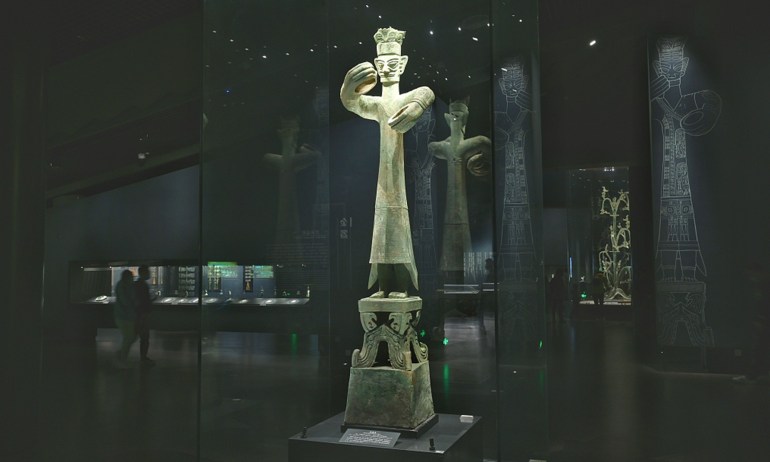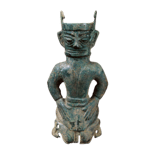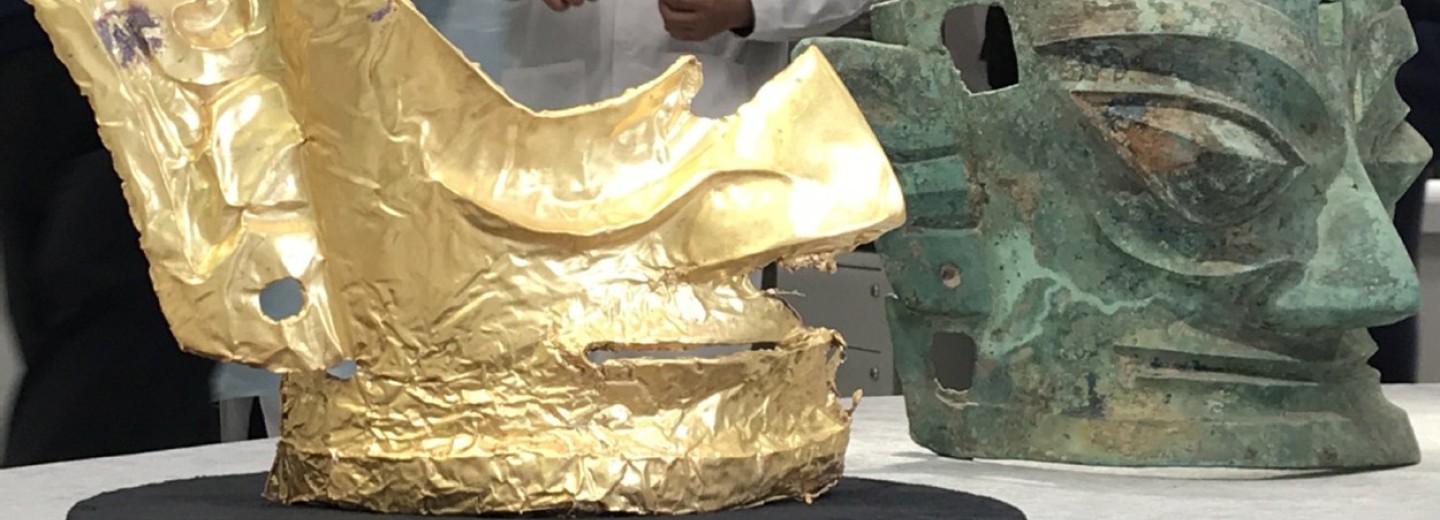Origins of Chinese people?
What an imposing title! And how dare I, not a scientist, anthropologist, or other expert, presume even to comment? Scientists do the real work and come to their academic conclusions. Each uses skills and knowledge gained over years of study. I have the luxury of reading their research and linking it to others. I can then imagine a scenario that might just be true. Please read this post, therefore, as a creative extension of fact.

Cave art from Sulawesi in Indonesia is now thought to be the oldest in the world.
Christopher Bae, professor of anthropology at the University of Hawai’i at Mānoa.
The team found that the human teeth dated from between 70,000 and 126,000 years ago. This is clearly impossible if modern humans moved out of Africa only 60,000 years ago.
Most of these dispersals into China appear to have followed a southerly route, skirting the intimidating Himalayas and the Qinghai-Tibetan Plateau eventually to reach western China. Following this, around 60,000 years ago, another migration took place. These humans were closer to modern humans.x They obviously met and encountered previous migrations and different types of hominins. No-one knows exactly how many different types of people there were, how many migrations took place or what happened when the species met each other.
Symbolic behaviour (art) appears through ochre pigments, perforated shells, stones, pendants and much else besides. These are signs that hominins were using and manipulating symbols. We used to think that these were solely the products of ‘modern’ humans and not a core part of other hominins’ behavioural repertoire. What is strange is that the earliest modern humans to appear in Asia, before the great dispersal from Africa 60,000 years ago, have no associated evidence of symbolic behaviour.
A theory
So – where is all this leading me? This is where the fanciful stuff begins…
I have written twice now about the amazing finds in Sichuan province. In our first piece I reviewed the discoveries. In our second, we looked at some of the discussion surrounding them. There is no doubt that the Sanxingdui Civilization is one of the most intriguing discoveries in China.

These are not ancient artifacts. The migrations from Africa are millennia older. These amazing objects survive from a mere 1000-2000 BCE. They are clearly Chinese. And yet they represent a different perspective of Chinese art, culture, and history. Scholars China and elsewhere are baffled about their origins. China’s civilisation is seen, so far, to have begun in the Central plains. The art and sculpture there is the very essence of what it is to be Chinese.

And yet, in Sanxingdui, there is evidence of a civilisation that bears little resemblance to what we know and expect of Chinese civilisation.
China is a massive country. Cut off from western lands by deserts and mountains, access is limited to a few customary passes and routes.
Within China are more mountains, huge rivers, and many natural barriers to movement. Despite the roaming nature of mankind, it would have been hard for people to move around quickly and freely. When a tribe found a congenial place to stay, in which they could obtain food and water easily and safely, they would stay.

Anthropologists believe that there were many migrations of different species of humans from Africa to other part of the world. China is a natural place of settlement if one wants to avoid a sea crossing. The ingredients for a successful civilisation – food, water, security, shelter exist in many places. Having crossed the arduous routes round the Himalayas, the plains of what is now Chengdu must have seemed a paradise.
What would be more natural than for groups to settle down and enjoy the fruits of the local environment?
As they did so, they learnt to use the resources available to them.
Throughout most of Chinese history, there was little attempt by Chinese authorities to separate the concepts of nationality, culture, and ethnicity. Those outside the reach of imperial control and dominant patterns of Chinese culture were thought of as separate groups of people regardless of whether they would today be considered as one. The process of Sinicization throughout history had more to do with spreading centralised imperial rule and culture than it did with actual ethnic migration.

Yet, separate development took place for millennia before centralisation. China’s topography closed off large areas of the country from others. China was populated by many different waves of migration and culture. If there is ‘one China’ today, it is the product of a 2,500-year political process rather than a genealogical one. Even so, today, China recognises 55 ethnic minorities.
What we see in Sanxingdui is the product of thousands of years of slowly developing artistry and civilisation that took place in an isolated part of western China. It reached a peak in about 1600 BCE and declined rapidly for reasons so far unknown. It bears little relationship to any other known parts of Chinese civilisation.
Links to Indochina?
The puzzle becomes more complex when we look at the Dong Son culture of northern Indochina. Today’s evidence suggests that this bronze culture was introduced into Indochina from the north, probably about 300 BCE.

The Sanxingdui discoveries are a mere 1000 kilometres north of Kunming. That sophisticated civilisation would have covered a very wide area. It would be strange if it did not penetrate the area around the Red River, the heart of the Dong Son culture.

This figurine comes from the Dong Son era – 1500 years after the Sanxingdui images. Thus, scientists interpret the Dong Son culture today as emerging from China.
But, as we saw at the start of this article, science moves on. What we fully believed from the available evidence ten years ago, we now find to be wrong because of two fingers embedded in rock. New discoveries about the human past occur daily in many parts of the world.
Scientific evidence apart, common-sense tell us that cultures and people have always migrated. The original migrations into China from Africa seem to have taken place in several waves. There were no national borders restrictions. ‘China’ did not exist until about 2200 BCE. Even then, its size was a fraction of what we know as China today.
The Chinese land mass was populated from the west, almost certainly from the area we now know as Indochina. Present knowledge suggests that the Sanxingdui discoveries pre-date those in Indochina by at least 1,000 years. Maybe though, the civilisation that produced Sanxingdui, moved back to the west again producing the Dong Son civilisation in the Red River area not far away.
Yet again, maybe they are one and the same civilisation and we have not found the evidence yet. What is certain is that, as fast as we are creating our future, we are discovering new facts about our past. Whatever we think we know today will be proved wrong very soon – more than once!
There is clearly a lot more to discover about both Sanxingdui and Dong Son.
Worked on the article:

Wanlikhang





